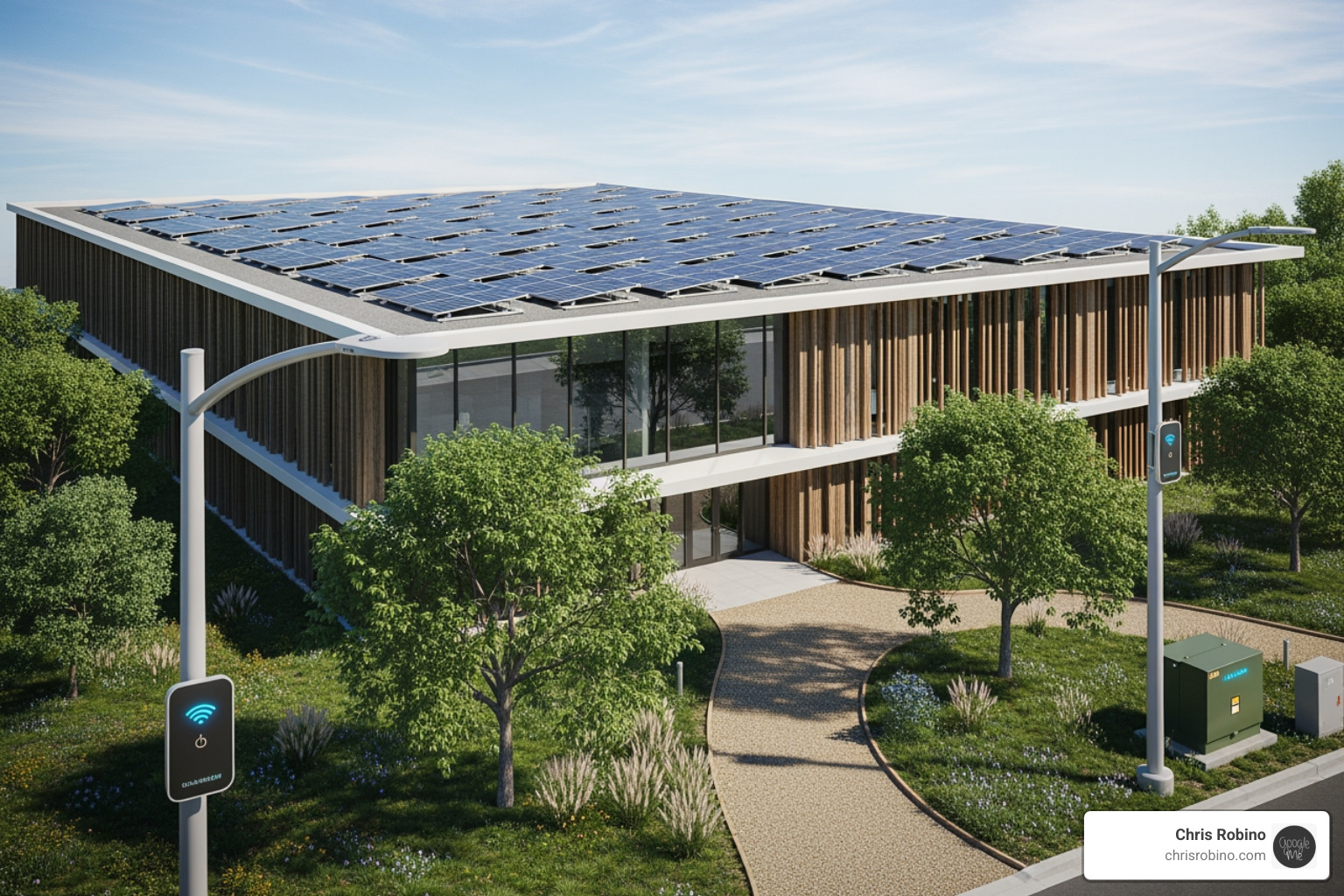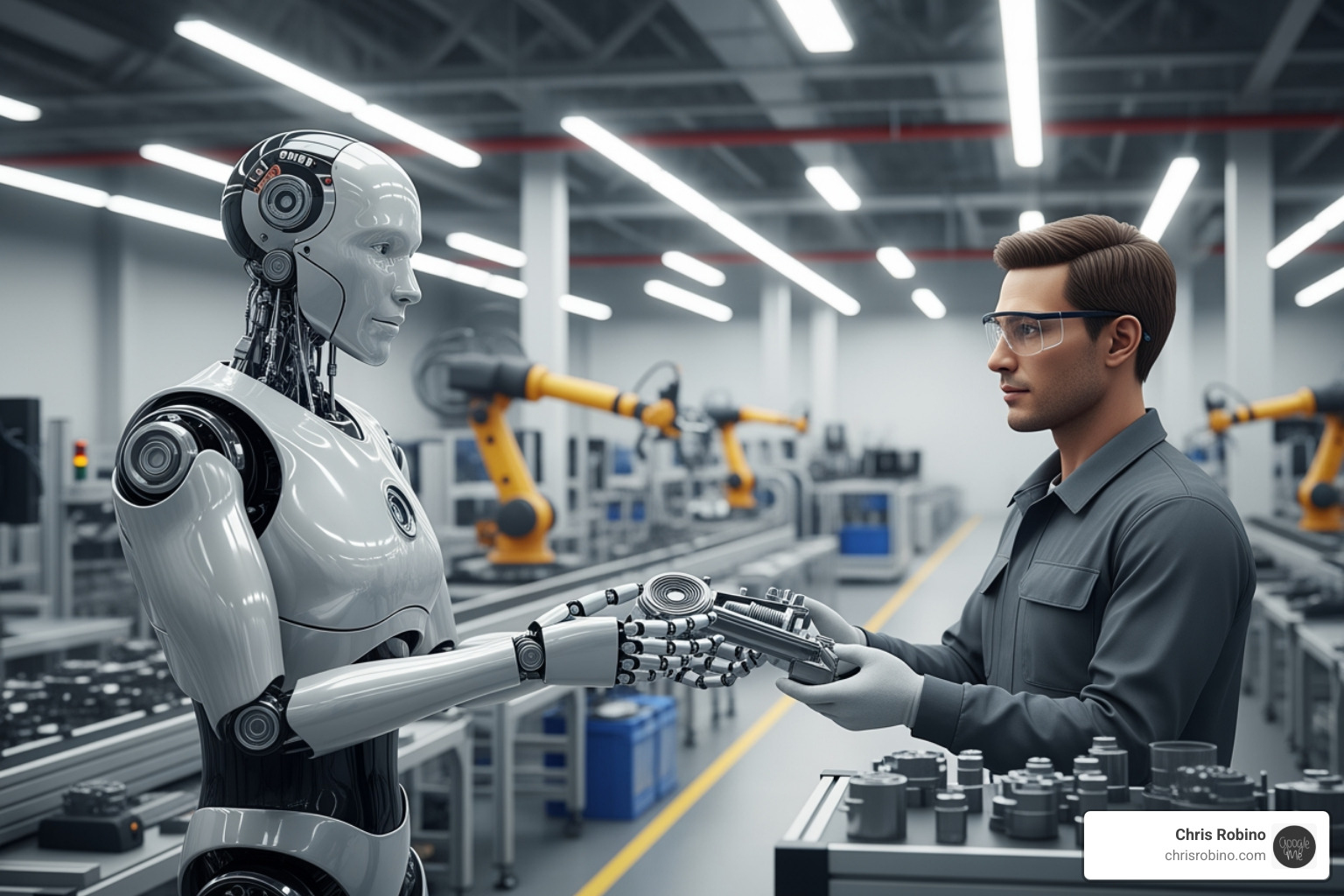The Technology Landscape That Will Define the Next Decade
Future business technology trends are reshaping how companies operate at an unprecedented pace. The World Economic Forum projects that by 2027, 23% of current roles will be disrupted, while 69 million new, tech-centric positions will emerge for those who adapt strategically.
The 13 Critical Technology Trends for Business Success:
- AI Supercomputing Platforms – Powering next-generation AI model training
- Agentic AI Systems – Autonomous agents that plan and execute complex workflows
- Cloud & Edge Computing – Distributed intelligence across infrastructure
- Sustainable Technology – Green computing as competitive advantage
- Physical AI – Robots and autonomous systems in real-world operations
- Spatial Computing & AR – Immersive interfaces for work and design
- Generative AI 2.0 – Enterprise-grade multimodal AI integration
- Domain-Specific Language Models – Industry-custom AI accuracy
- Digital Twins – Virtual replicas driving optimization and innovation
- Preemptive Cybersecurity – AI-powered threat prevention
- AI Governance Platforms – Centralized trust and compliance management
- Low-Code/No-Code Development – Democratized software creation
- Quantum-Ready Cryptography – Securing data for the quantum era
The common thread? AI isn’t just another tool—it’s becoming the substructure of everything we do. These technologies are converging forces that amplify each other, and strategic adoption separates leaders from laggards. The challenge isn’t just keeping pace; it’s navigating complexity, scaling solutions responsibly, and building stakeholder trust to capture value.
As Chris Robino, I’ve spent over two decades helping organizations steer future business technology trends, from AI automation to intelligent search solutions. In this guide, I’ll break down which trends truly matter and how to integrate them into your strategy without the hype.

The Core Future Business Technology Trends for 2026 & Beyond
The business technology landscape is changing at a pace that would have seemed impossible just a few years ago. These interconnected forces are reshaping how we work, compete, and create value. Let’s explore the core trends that will separate industry leaders from laggards.
Foundational Shifts: The New Tech Infrastructure
Before deploying autonomous AI or immersive experiences, businesses need a powerful and sustainable infrastructure. AI supercomputing platforms from leading providers are essential for training sophisticated models, with demand for AI-ready data centers projected to surge 33% annually through 2030. This power must be managed to avoid becoming a liability.
Intelligence is also becoming more distributed. Cloud and edge computing work in tandem, balancing centralized flexibility with localized, real-time processing for everything from factory floors to retail stores. With global edge spending expected to surpass $300 billion by 2026, this shift to distributed intelligence is fundamental.
Finally, sustainable technology is now a competitive differentiator. With rising energy costs and regulations, green computing directly impacts the bottom line. Leading cloud providers report their infrastructure can cut carbon emissions by up to 99% and is significantly more energy-efficient than on-premise setups, offering measurable cost savings. For more on this, explore our Sustainable Tech Solutions.

The Rise of Autonomous & Agentic AI: A Core Future Business Technology Trend
AI is evolving from a helpful tool to an autonomous agent. Agentic AI systems can independently plan and execute complex, multi-step tasks without constant human oversight, acting as “virtual coworkers” that handle entire workflows. The market for this technology is projected to hit $11.79 billion by 2026. Multiagent systems take this further, allowing specialized AI agents to collaborate on complex problems.
This intelligence is also entering the physical world. Physical AI brings autonomy to robots, drones, and smart equipment. These systems are already coordinating logistics, navigating warehouses, and performing tasks in hazardous conditions. By 2028-30, Level 4 autonomous trucks are expected on highways. This technology helps businesses solve labor shortages and boost productivity, offering measurable improvements to operational efficiency. Find how these technologies can transform your operations with our AI-Driven Business Solutions.

Redefining Interaction: Immersive & Collaborative Worlds
The way we interact with technology is becoming more intuitive and immersive. Spatial computing and augmented reality (AR) are moving from novelty to necessity, with the market projected to exceed $1.7 trillion by 2032. The applications are transformative: field technicians get remote expert guidance, architects walk through virtual buildings before construction, and warehouse workers receive in-sight picking instructions, boosting efficiency and reducing errors.
Digital twins create living virtual replicas of products, processes, or entire systems, integrating real-time data to mirror their physical counterparts. This allows companies to test scenarios and optimize performance without disrupting actual operations. Gartner predicts that by 2030, digital twins will be central to over 70% of product development. These technologies are also fostering new human-machine collaboration models, where AI augments human capabilities rather than replacing them, making teams more creative and productive. For more on these interactions, check out our Emerging Tech Insights.
The Next Wave of AI-Powered Applications
Generative AI is maturing into serious enterprise applications focused on measurable business value. Generative AI 2.0 is evolving into multimodal systems that seamlessly combine text, visuals, and data. Gartner projects that by 2027, 40% of generative AI solutions will be multimodal, up from just 1% in 2023.
Domain-specific language models, fine-tuned on proprietary industry data, are delivering superior accuracy for critical use cases in fields like healthcare and law. By using Retrieval-Augmented Generation (RAG), businesses can achieve outputs that are both relevant and verifiable. The focus has shifted from experimentation to enterprise-grade integration, with 65% of organizations now using generative AI regularly. Capturing the projected $2.6 to $4.4 trillion in annual value requires strategic implementation, not just adopting the latest tool. Explore leveraging AI for strategic advantage with our AI-Powered Analytics.
Fortifying the Future: Advanced Security & Trust
As technology becomes more pervasive, the stakes for security and trust rise exponentially. Preemptive cybersecurity uses AI to predict and block threats before they strike, saving organizations an average of $1.76 million per breach compared to traditional methods. In a world of AI-generated content, digital provenance becomes essential to verify authenticity, creating a trusted chain of custody for data.
With regulations like the EU AI Act emerging, AI governance platforms are becoming an operational necessity to ensure fairness, transparency, and compliance. The market is projected to reach $1.4 billion by 2030, reflecting the need for systematic governance to scale AI responsibly. Learn more about building ethical systems through Ethical AI Development. Finally, the threat of quantum computers breaking current encryption means organizations must urgently transition to quantum-ready cryptography to protect data from future breaches. The European Commission’s human-centric Industry 5.0 framework also underscores the importance of building trustworthy, people-focused systems.

The Democratization of Development: A Key Future Business Technology Trend
Software creation is no longer the exclusive domain of specialized engineers. AI-native platforms and low-code/no-code development are empowering “citizen developers”—business users who understand problems—to build their own solutions. Gartner predicts that by 2026, the low-code market will reach $44.5 billion and that 80% of tech products will be built by non-IT professionals.
For professional developers, AI-assisted development tools act as coding copilots, handling repetitive tasks and accelerating complex work. This combination dramatically reduces development costs and accelerates innovation, allowing organizations to respond to market changes faster. For guidance on integrating these tools, consider our Business and Technology Consulting services.
From Trend to Change: Your Strategic Next Steps
Understanding these future business technology trends is just the beginning. Real value comes from changing awareness into action by weaving these innovations into a cohesive digital ecosystem.
Strategic integration separates leaders from followers. The key is to explore where industry needs intersect with technological capabilities, solving real problems in new ways. However, this requires navigating complexity, building resilience against supply chain and geopolitical shifts, and scaling solutions securely. Responsible innovation is a strategic imperative; trust is the gatekeeper to adoption, and customers and partners demand ethical, transparent AI deployment, as emphasized by frameworks like the European Commission’s Industry 5.0.
This journey isn’t easy, and you don’t have to steer it alone. As a Tech Consultant, I translate complex advancements into clear, actionable strategies that drive growth. Whether you need Business and Technology Consulting to align your roadmap, AI-Driven Business Solutions to automate operations, or guidance on Ethical AI Development, I can help.
To develop a roadmap custom to your goals, explore our complete guide on Technology Trends for Business. We’re here to help you future-proof your business with clarity and strategic focus.
